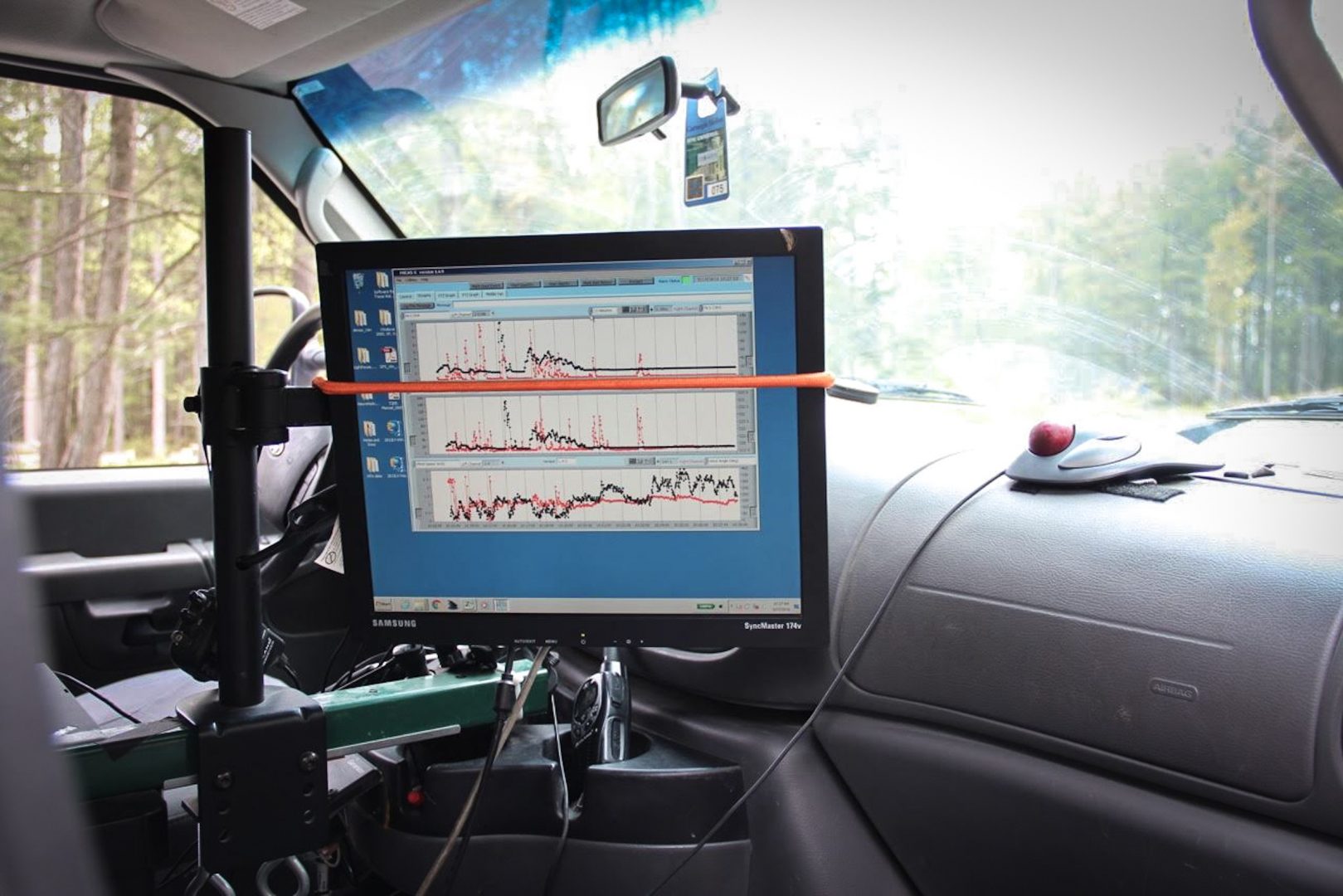
In this 2016 photo, scientists from Carnegie Mellon use mobile labs to detect methane leaks from the natural gas industry.
Reid R. Frazier / StateImpact Pennsylvania


In this 2016 photo, scientists from Carnegie Mellon use mobile labs to detect methane leaks from the natural gas industry.
Reid R. Frazier / StateImpact Pennsylvania

Reid R. Frazier / StateImpact Pennsylvania
In this 2016 photo, scientists from Carnegie Mellon use mobile labs to detect methane leaks from the natural gas industry.
Countries that attended the recent United Nations climate change conference are making new pledges to rein in planet-warming emissions.
Environmental groups are applauding the United States’ move to cut methane leaks at oil and gas sites, calling it a big win for the climate and public health.
The Environmental Protection Agency released a final rule Dec. 2 that aims to avoid 80 percent of methane emissions by 2038, an estimated 58 million tons.
When companies drill for oil, they may flare, or burn, any natural gas that comes out of the well as a waste product. The rule phases out that practice and requires all well sites and compressor stations be routinely monitored for methane leaks. Monitoring must continue until companies confirm that well sites have been properly closed and plugged.
“We were very excited about the idea–this rule basically eliminates the concept of an abandoned well because wells are going to have to be monitored until they are plugged,” said Russell Zerbo with Clean Air Council.
Methane is the main component of natural gas and is considered a “super pollutant” because it warms the planet much faster than carbon dioxide. Even though it lasts less time in the atmosphere than CO2, methane is better at trapping heat. EPA says rapid, sharp cuts in methane can generate near-immediate climate benefits.
Oil and gas operations account for nearly 30 percent of all methane emissions in the U.S., according to the EPA.
Orphan and abandoned wells leak methane after companies stop production, if the wells are not properly plugged. Pennsylvania has recently seen an influx of federal money to cap those wells.
The rule also mandates that pressure control devices used at sites be zero-emitting.
The EPA says the amount of gas recovered by preventing leaks will be enough to heat nearly 8 million homes for the winter.
Under the rule, third parties will be able to use aircraft and satellites with remote-sensing technologies to find large methane leaks and report those to EPA. This “super-emitter” data will be publicly available.
Zerbo said that piece could give more power to communities that live near gas drilling.
“They will see some improved communication and improved leak detection and repair as a part of this rule,” he said.
When published, the rule will apply to all oil and gas infrastructure built after December 2022. Those sites will have a year to phase in zero-emission pressure control devices.
States have two years to write rules that bring older sources up to the new standards. EPA will then have another year to review them.
Industry groups responded to the rule by noting that the oil and gas sector’s methane intensity, or leak rate, has been falling over the last decade.
“We share the administration’s goal of reducing methane emissions and smart federal regulation can help build on industry’s progress to date. To be truly effective, this rule must balance emissions reductions with the need to continue meeting rising energy demand,” said Dustin Meyer with the American Petroleum Institute.
In a blog post, the Marcellus Shale Coalition said the Appalachian basin’s greenhouse gas emissions intensity dropped 22% last year, driven by a reduction of reported emissions from pressure control devices.
The post argues increased use of natural gas will benefit the environment, but said policymakers have been hindering infrastructure development needed to meet consumer demand.
Sierra Club Pennsylvania Chapter said the Pennsylvania oil and gas sector emits 1.1 million tons of methane into the atmosphere annually. Its director, Tom Schuster, said they have called for new standards for years.
“The EPA’s methane rule is a critical step toward ensuring that all oil and gas companies across Pennsylvania are held accountable for reducing their emissions and that our families will be able to breathe cleaner air and have a safer and more stable climate,” Schuster said.
StateImpact Pennsylvania is a collaboration among WITF, WHYY, and the Allegheny Front. Reporters Reid Frazier, Rachel McDevitt and Susan Phillips cover the commonwealth’s energy economy. Read their reports on this site, and hear them on public radio stations across Pennsylvania.
(listed by story count)
StateImpact Pennsylvania is a collaboration among WITF, WHYY, and the Allegheny Front. Reporters Reid Frazier, Rachel McDevitt and Susan Phillips cover the commonwealth’s energy economy. Read their reports on this site, and hear them on public radio stations across Pennsylvania.
Climate Solutions, a collaboration of news organizations, educational institutions and a theater company, uses engagement, education and storytelling to help central Pennsylvanians toward climate change literacy, resilience and adaptation. Our work will amplify how people are finding solutions to the challenges presented by a warming world.